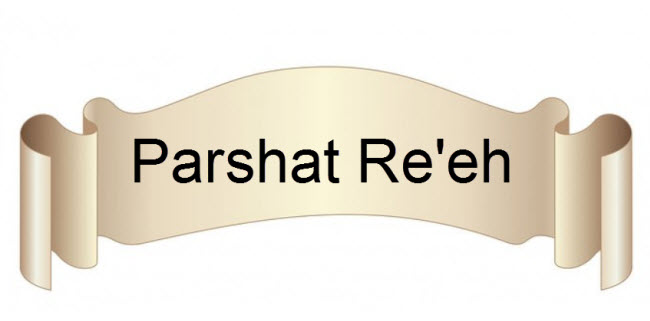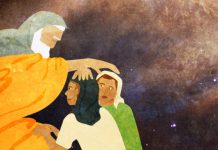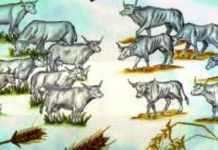More Mitzvot; Choose Life!
The situation in Israeli intelligence was very tense. The danger that loomed over the Jewish state was too horrible to imagine. Iraq was on the verge of developing nuclear weapons. Their reactor had to be bombed; of this there was no doubt. The very existence of Israel was at stake.
The only question was when should Israel strike? If they destroy the reactor too early, the Iraqis would be able to reconstruct it easily. On the other hand, if they wait too long, the entire Middle East might explode!
Precise information was essential. Agent Ploni was the perfect man for the job. As a personal friend of Saddam Hussein, he was able to enter Iraq freely and conduct intimate connections with top-ranking Iraqi officers.
One week later, Ploni found himself in Baghdad together with 10 members of Israeli intelligence. As Ploni succeeded in obtaining the critical information, the other spies sat in the kasbah all day drinking beer and smoking water pipes. They met back up at the airport, where Ploni handed each agent a signed and sealed copy of a message. Each agent then flew to a different country, and met another agent in the airport, where they transmitted the sealed messages and signed their names.
Ten countries later, the 10 signed and sealed messages arrived in Israel, each copy signed by 10 agents. Each message was identical: “Bomb the reactor on this date, and at this time. This is my final message. If anyone claims I made any change, he is an enemy agent and eliminate him immediately.” (adapted from a scenario used in Arachim seminars)
Since the exact message changed hands and places so many times – yet remained identical – we can conclude that it must be the original message. If anyone had changed the message even slightly, it would clearly stand out in contrast to the other nine copies. Secondly, Ploni’s condition that the message could never be altered, proved that Ploni had the entire situation under control. There could be no last-minute changes. (Not a casual claim for a real spy to make!)
This story is an analogy for the transmission of the Oral Torah from country to country, and from generation to generation. For thousands of years, Jews across the globe have held the same basic traditions (though some customs vary from place to place). From the Yemenite Jews, who had no contact with other communities for hundreds of years, to the Sephardi and Ashkenazi Jews in their far-flung communities, Jews all share the same Torah text, the same laws of Shabbat and Kashrut, and even rabbinical decrees such as Chanukah and Purim.
In Parshat Re’eh, Moses commands the Jews to execute a “prophet” who instructs them to worship idols. This is the final message I am communicating, says Moses. There is no way it can be changed. If someone tries to change the message, he is an imposter and must be killed. (If a “committee” wrote the Torah, they would surely have left an “escape clause” to make needed amendments in the future!)
_________________________
SECOND SECTION OF DEUTERONOMY
Our Parsha begins the middle section of Deuteronomy. We see the conclusion of the “law-giving” process in which Moses transmitted the 613 Mitzvot he received at Sinai. Some of these laws had previously been mentioned, hence the name for this book, Mishnah Torah ? “review of the Torah.”
However, there were also many new laws. According to Rabbi S.R. Hirsch, 70 out of 100 are new. Rabbi Hirsch points out how the emphasis of these laws was focused on the people entering the land, as opposed to people accustomed to life in the desert. The agricultural laws, laws of charity, laws of the Sanhedrin (court), all relate primarily to entering the Land of Israel, as opposed to the miraculous existence in the desert.
_________________________
MOUNT GRIZIM AND MOUNT AIVAL
Moses instructs the people to gather on two mountains when they enter the land. These mountains, adjacent to each other, are unique. Mount Grizim is alive with foliage and vegetation, while Mount Aivel is bleak and desolate. (These mountains can be seen today outside the city of Shechem/Nablus.)
Moses commands the people to divide the tribes on these two mountains, and accept upon themselves the blessings and curses (elaborated later, in Parshat Ki Tavo).
Rabbi Hirsch explains the symbolism of these mountains. Although both mountains have the same sunlight, rainfall, and fertility, one is verdant and the second is bare. This symbolizes the concept of free will that our Parsha begins with:
“Behold, I have placed before you today the blessing and the curse.” (Deut. 11:26)
It is possible for two people to have the same exact potential, while one thrives and the other withers. We all must choose the path of blessing or curse, and what we sow is what we reap.
_________________________
THE LAWS OF SLAUGHTER
The Torah says to “slaughter the animals as I have commanded you” (Deut. 12:21). The complex laws of slaughtering animals (sh’chita) include:
The knife must be totally smooth (inspected by fingernail test throughout the process).
The majority of the esophagus (food pipe) and trachea (air pipe) must be sliced with one, long, smooth cut. The blood then rushes out of the brain and no pain is felt.
Question: Where are the details of how to slaughter mentioned in the Torah?
Answer: They aren’t. The source of these laws is an oral tradition, transmitted by Moses.
Question: Then why does the Torah state, “As I have commanded you”?
Answer: This is a clear reference to the Oral Torah in the Written Torah itself, a proof of the existence of the Oral Torah. The verse means, “As I have commanded you – orally!” (Another example of this: “Write this in the book and put it into the ears of Joshua” [Exodus 17:14] – meaning both in written form as well as orally with explanation.)
After slaughtering an animal, the Torah prescribes additional procedures:
(1) The lungs must be checked for lesions (perforations), which may render the animal non-kosher.
(2) Certain fats must be removed, as well as the Gid Hanasheh (sciatic nerve), which is a reminder of the wrestling match between Jacob and the angel (see Genesis 32:33).
(3) In order to remove all blood, the meat must be soaked and salted, and high-blood-content organs like the liver must always be roasted
_________________________
INCITEMENT TO IDOLATRY
In the instance where a Jew tries to incite his neighbor to worship idols, the Torah takes a very hard stance. Do not have compassion on the inciter; do not say anything in his favor. If he is convicted, we do not even try to find him innocent, as opposed to all other capital offenders (including murderers) who we try our best to free.
The Sages cite the snake in the Garden of Eden as the first case of this. The snake incited Eve to violate God’s word. God asked Adam and Eve why they sinned, and then listened to their excuses. The snake, however, was immediately sentenced with no defense allowed. (The Sages say that had he been asked, the serpent could have claimed a good argument: “Who told them to listen to me and not to God?!”)
From the harsh punishment for inciting others against God, we can infer the tremendous reward for those who bring others closer to God.
When describing incitement to idolatry, the Torah adds the words “to those nearby and those far away” (Deut. 13:8). On this the Sages comment, “Just as the nearby idols have no substance, the same applies to the far-off ones.” If someone thinks that in far-off Tibet the Buddhist monks with their prayer wheels are really in touch with the spiritual truth, it isn’t necessary to travel all the way to Tibet. Just take a look at your local form of idolatry and link the two.
_________________________
LAWS MENTIONED IN PARSHAT RE’EH
- A review of the laws of keeping kosher (see Parshat Shmini).
- The tithing of produce.
- The laws of firstborn animals.
- The annulment of loans every seven years. At the commencement of the Sabbatical year (see Parshat Behar), one may not demand payment for any outstanding loan. If the borrower nevertheless offers payment, the lender must proclaim the debt as non-collectable. If the borrower still insists paying, the lender may accept the money.
_________________________
PRUZBUL: A LEGAL LOOPHOLE
Historically, wealthy people would worry that poor people would try to take advantage of the above-mentioned law by waiting until the Sabbatical year to ask for a loan. The result was that the wealthy would refuse any loans close to the Sabbatical year. This went against the Torah’s requirement to lend the poor.
In order to remedy the situation, the great sage Hillel found a loophole in the law. He inferred from the verses that although a private loan was cancelled in the Sabbatical year, this was not the case if the loan was collected through the Beit Din (Jewish court). Thus Hillel instituted the writing of a document called a “Pruzbul,” which enables all private loans to be officially transferred to the courts for collection. As long as this arrangement was made before the onset of the seventh year, it successfully bypassed the prohibition against collecting loans.
This document is still in use today. Some claim Hillel “liberally” adapted the Torah’s laws to conform to the times. This is based on a misconception of how Jewish law works. Indeed, in civil law, when one is able to find a loophole, it means that the legislators simply overlooked a point – and the loophole is a way of “getting around” their true intentions.
Yet with Torah, which we accept as a divine document, this cannot be. Rather, although God preferred that all creditors repay before the seventh year, if they couldn’t, the idea was to teach the rich man that everything belongs to God – and when the Sabbatical year comes, just as he is limited in agriculture, so too he may not demand payment of loans. However, in anticipation of the time when the poor would be refused loans, God purposely provided this loophole.
_________________________
PASSOVER IN SPRINGTIME
The Torah specifies that Passover must always arrive at springtime. The symbolism is that the rejuvenation of the Jewish people coincides with the rejuvenation of nature.
The practical aspect of this is the creation of a “leap year.” As opposed to Muslims (who also use a lunar calendar), the Jewish holidays do not fluctuate from season to season, due to the gap between the 365 days of the solar calendar and the 354 days of the lunar calendar. Every few years we add an entire month (a second Adar), assuring that Passover will always remain in the spring.
_________________________
THE MEANING OF SUKKOT
The grain that was planted at Passover time and harvested at Shavuot time, was left on the fields to dry until just before the rainy season began. The holiday of Sukkot, which commemorates the “booths” that sheltered the Israelites in their journey through the desert, is also very significant agriculturally. At this time, all the grain is gathered and put into storage bins, which arouses much joy and celebration.
From the remnant of the threshing floor, the roof of the Sukkah was made. Anything that grows from the ground, and is now disconnected from the ground, can be used for “schach” (the cover of the Sukkah). The cracks in the schach enable a view of the stars, or the sunset.
Rabbi Hirsch explains that this is a lesson for every Jew. Consider those who enjoyed a good crop and had their storehouses full of grain. So as not to think that their own genius produced all this, the Torah commands them to leave their comfortable homes and sit in “temporary dwellings” to contemplate on the fragility of life. Look through the schach and see the stars. Remember how God led our ancestors through a desolate desert, and recall that everything we have comes from God. Thank Him for our gifts.
The same applies to the poor person. He didn’t have such a bumper crop and his storage bin is quite empty. He is anxious about how will he feed his family in the cold winter. The Torah addresses him as well: Leave your humble abode and enter the Sukkah, look through the cracks in the schach and remember God, “Who took you out of Egypt to be your God.” He will surely provide for all your needs.
credit to aish.com












